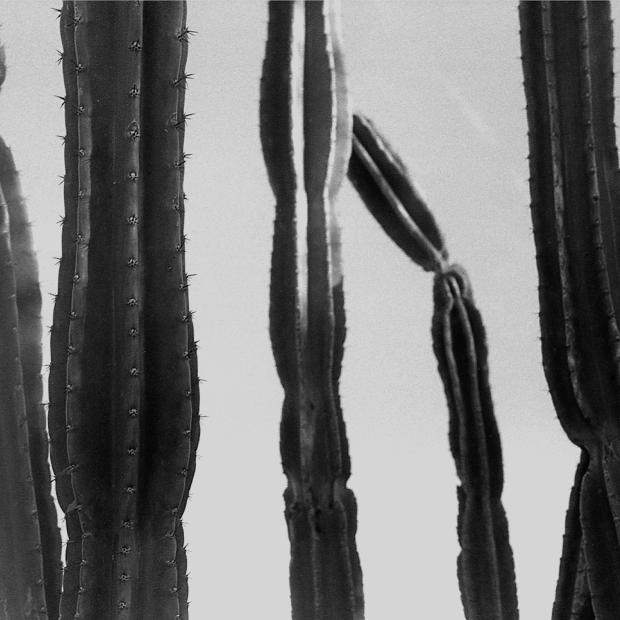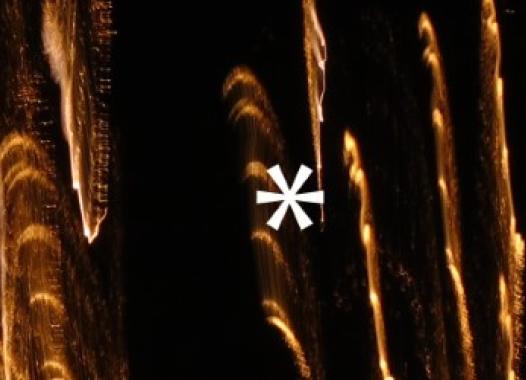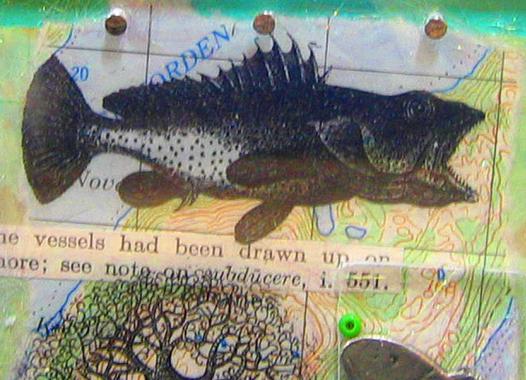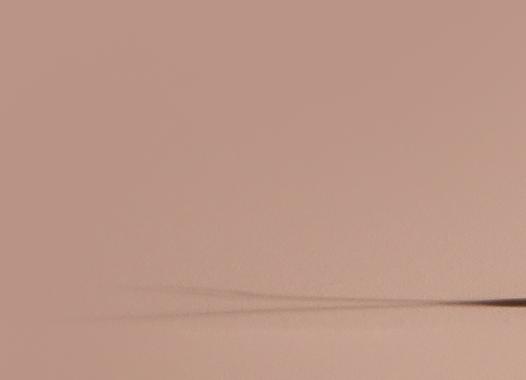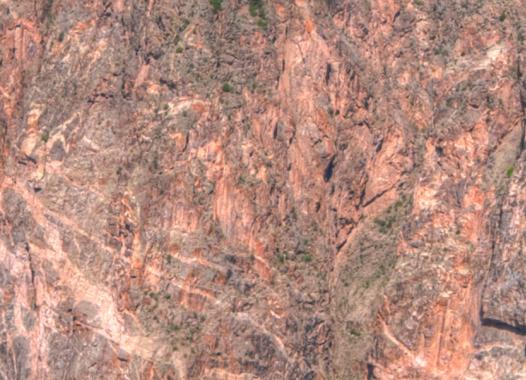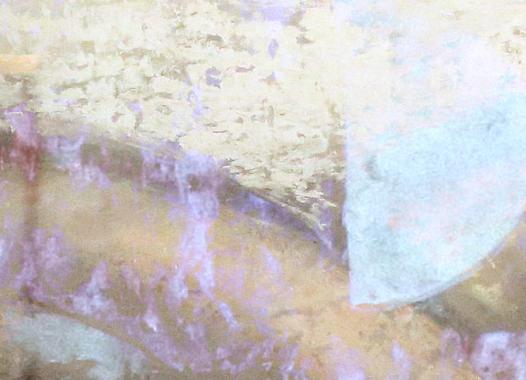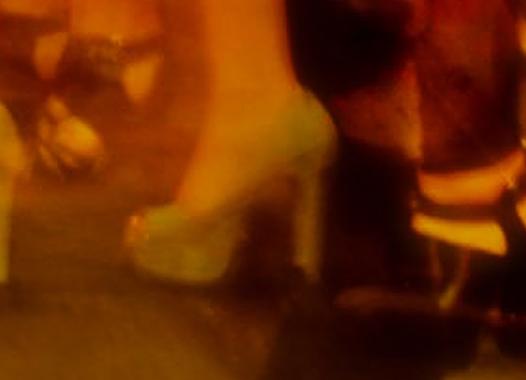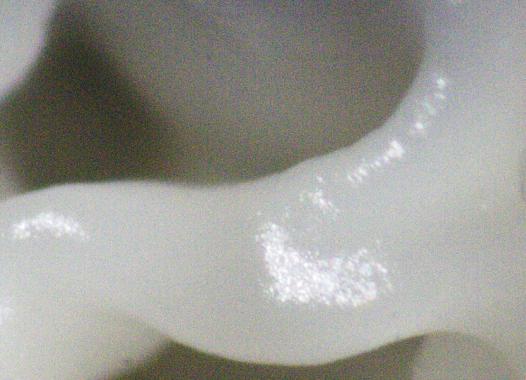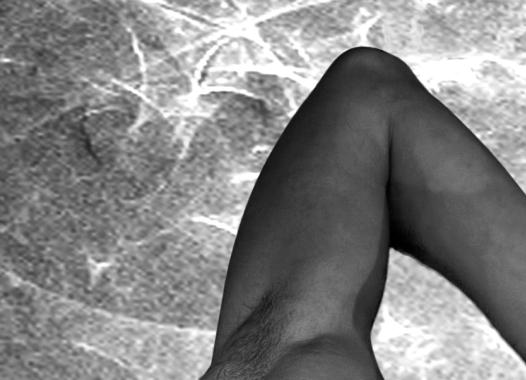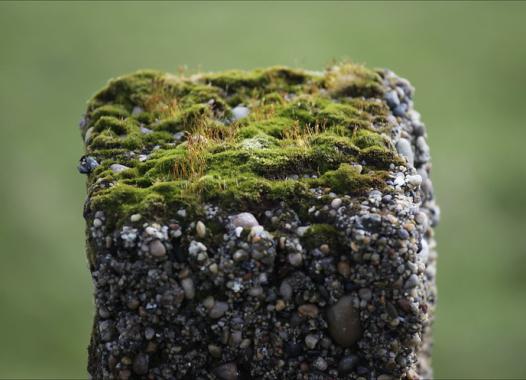
296
This is an excerpt from Pauline Goul's "The Vanity of Ecology: Expenditure in Montaigne's Vision of the New World"
A great paradox courses through sixteenth-century literature in France. Despite being a century of abundance and economic prosperity after many decades of war and famine, and notwithstanding the glorious Renaissance of Loire Valley châteaux and Francis I’s colonial endeavours in the New World, scholars such as Rebecca Zorach argue that abundance and excess were far from unanimous.[1] Many of the most influential writers of the period dwell on the wastefulness of the century: Michel de Montaigne deplored a ‘siècle desbordé [an overwhelmed century]’,[2] a ‘saison si gastée [a wasted season]’ (E 649). In the second chapter of the first book of the Essais (1580), Montaigne congratulates himself on ‘se sentir preservé de la contagion d’un siecle si gasté [feeling unspoiled by the contagion of such a wasted century]’ (E 22).[3] Despite Montaigne advocating a philosophy of moderation, images of overflow and excess suffuse the Essais. These versions of waste amount to a dépense [spending] of energy, money or natural resources. What led Montaigne to maintain such a negative opinion of spending and expenditure? I shall argue that Montaigne is an environmental writer by way of his definition of dépense. In my reading, ‘evironmental’ is a term that can be applied to texts and authors who demonstrate a tropological relationship to the nonhuman environment as a structural dimension of their thought.[4] In his chapters about the New World, ‘Des cannibales’ and ‘Des coches’, Montaigne develops a strangely modern care for the environment, yet scholars have not often drawn conclusions that combine Montaigne’s economic and ecological insight.[5] An environmental and economic reading of expenditure in the wake of Bataille helps us to rethink environmental crisis in our own era as much as Montaigne’s, and might begin to explain why the long sixteenth century began with the Columbian Exchange and concluded with the Wars of Religion. How was the promise of a new world with new resources ultimately wasted?
The environmental aspects of ‘Des cannibales’, one of the most studied chapters of Montaigne’s work, are somewhat dissimulated under the author’s humanist commentary, but the environment is structurally significant to Montaigne’s argument. From the beginning, ‘Des cannibales’ grapples with questions of space and scale. Montaigne first identifies the New World as ‘cet autre monde [this other world]’, introducing the eyewitness account of a man who was in his service, and who lived a decade in ‘la France Antartique’.[6] Immediately after announcing this continent as irremediably other, Montaigne narrows the scope from world to ‘païs’: ‘Cette descouverte d’un païs infiny, semble de grande consideration (E 208) [The discovery of a boundless country seems worthy of consideration]’.[7] In Middle French, pays refers to a ‘région géographique habitée, plus ou moins nettement délimitée [a geographical region that is inhabited, more or less neatly delimited]’.[8] It is likely that the ‘less neatly delimited’ dimension interests Montaigne: ‘Infiny’ points to the idea of the New World having no limits – neither material nor conceptual, since its boundaries are still being defined as a site of speculation. The figurative limits of the world are at stake in the discussion that follows: ‘j’ay peur que nous ayons les yeux plus grands que le ventre, et plus de curiosité, que nous n’avons de capacité: nous embrassons tout, mais nous n’estreignons que du vent [I am afraid we have eyes bigger than our stomachs, and more curiosity than capacity. We embrace everything, but we clasp only wind] (E 208; W 182). Montaigne moves from a mere consideration to a declared fear, revealing his scepticism about colonial endeavours in the New World. It is significant that the chosen idiom usually refers to appetite or greed; Montaigne relates the infiniteness that defines the New World to the finiteness of human capacities and the human body. In Montaigne’s analogy, it is as if the human body will somehow absorb the New World. From the very beginning of ‘Des cannibales’, colonisation is a problem of consumption that is a vain movement: ‘nous n’estreignons que du vent’.
The human body is never far from the nonhuman environment in Montaigne’s work, and both entities are closely related, if not, I would argue, porously bound. The aforementioned reference to wind is not uncharacteristic, and the text soon turns to another meteorological element. Surrounded by images of water and floods, we comes across Atlantis: ‘jadis et avant le deluge, il y avoit une grande Isle nommée Atlantide, droict à la bouche du destroit de Gibraltar, qui tenoit plus de païs que l’Afrique et l’Asie toutes deux ensemble [in days of old, before the Flood, there was a great island named Atlantis, right at the mouth of the Strait of Gibraltar, which contained more land than Africa and Asia put together]’ (E 208; W 182).[9] After retelling the tale of Atlantis, Montaigne concludes by describing the simultaneous, common end of the island, its inhabitants, and some Athenians who ‘furent engloutis par le deluge [were swallowed up by the Flood]’ (E 209; W 182). This is the first of many instances of engloutissement – another form of consumption – in relation to the New World, and it sets up a motif of conflict between earth and water that resurfaces in ‘Des coches’. The biblical flood prompts an environmental thought: ‘Il est bien vraysemblable, que cet extrême ravage d’eau ait faict des changements estranges aux habitations de la terre: comme on tient que la mer a retranché la Sicile d’avec l’Italie [it is quite likely that that extreme devastation of waters made amazing changes in the habitations of the earth, as people maintain that the sea cut off Sicily from Italy]’ (E 209; W 183). Montaigne’s environment is nonhuman; the only human element is the ‘habitations de la terre’. It is the nonhuman that acts: the sea cuts off the land between Sicily and Italy. The images invoke water wasting away the land, as the exceptional dimensions of the water conjure associations with a disaster: the ‘extrême ravage d’eau’ and the ‘effect incroyable d’inundation’ are followed, a few lines later, by the erosion of the Dordogne, as the discussion of Atlantis prompts Montaigne to consider his païs alongside the Dordogne.
Without concluding the reflection on Atlantis, or introducing the discussion of erosion, Montaigne proceeds: ‘Il semble qu’il y aye des mouvemens naturels les uns, les autres fievreux en ces grands corps, comme aux nostres [it seems that there are movements, some natural, others feverish, in these great bodies, just as in our own]’ (E 209; W 183). The chiasmus opposes two types of movements with adjectives that do not seem to contradict one another, although their position in the chiasmus suggests that they do. In this context, naturel appears to be synonymous with normal, and to stand in opposition to fievreux, which denotes a disease, an infection, or an abnormal event in the body. [10] Montaigne situates his observation in the realm of medicine, since the other parallelism of the sentence – the simile – links human bodies and the somewhat vague concept of ‘ces grands corps’. This description finds meaning somewhere between the various islands under discussion, ‘ce monde nouveau [this new world]’ (E 209; W 183), and ‘les terres [the lands]’ (E 209; W 183). The result of the observation is a merging of lands and human beings as ‘corps’ [bodies] encompassing normal and abnormal movements. In ‘Des cannibales’, environmental disasters appear as floods or figures of imminent, ongoing erosion, and are compared to diseases of the human body in a condemnatory mode informed by Montaigne’s negative views on medicine.
The surprising appearance of an environmental discussion is little more than a pretext for another anecdote on a legendary transatlantic voyage. The consideration of the erosion of the Dordogne comes just before the chapter reaches its announced topic, cannibals, by way of the Aristotelian anecdote of Carthaginians who found a fertile land in the West: ‘cette narration d’Aristote a non plus d’accord avec nos terres neufves [this story of Aristotle does not fit our new lands any better than the other]’ (E 210; W 184). As he approaches the topic, Montaigne considers all of these islands and lands in order to trace the relation of possession between a land and its inhabitants. The first mention of the key term païs is bound with a possessive ‘leur’, and the Atlantis anecdote concludes with another determiner: ‘et eux et leur Isle furent engloutis [both the Athenians and themselves and their island were swallowed]’ (E 209; W 182). Once the Dordogne comes under discussion, Montaigne moves toward his own possession of the land:
Quand je considere l’impression que ma riviere de Dordoigne faict de mon temps, vers la rive droicte de sa descente; et qu’en vingt ans elle a tant gaigné, et desrobé le fondement à plusieurs bastimens, je vois bien que c’est une agitation extraordinaire: car si elle fust tousjours allée ce train, ou deust aller à l’advenir, la figure du monde seroit renversée. (E 210)
[When I consider the inroads that my river, the Dordogne, is making in my lifetime into the right bank in its descent, and that in twenty years it has gained so much ground and stolen away the foundations of several buildings, I clearly see that this is an extraordinary disturbance; for if it had always gone at this rate, or was to do so in the future, the face of the world would be turned topsy-turvy.] (W 183)
In Middle French, the word ‘impression’, which one annotation translates as érosion, signifies a trace left by one body on another;[11] to take an example from the Essais that features in the Trésor de la Langue Française Informatisé: ‘action d'un corps sur un autre [the action of one body on another]’.[12] Montaigne’s comments about the ‘agitation extraordinaire’ evoke the feverish movements of human and nonhuman bodies, as the author accounts for the impact of changes in great bodies on the human realm. The scale is also quite striking, since the mere erosion of a riverside prompts Montaigne to foresee its global impact: ‘la figure du monde seroit renversée’. The verbs such as ‘desrobé’ and ‘renversée’ convey the instability of the environment that surrounds the human being, and a lack of control over these surroundings is perceptible: ‘mais il leur prend des changements: tantost elles s’espandent d’un costé, tantost d’un autre, tantost elles se contiennent. Je ne parle pas des soudaines inondations dequoy nous manions les causes [But rivers are subject to changes: now they overflow in one direction, now in another, now they keep to their course. I am not speaking of the sudden inundations whose causes are manifest]’ (E 210; W 183)[13]. Montaigne mentions environmental movements whose causes human beings understand, such as floods, but erosion is not one of these; in that regard, he depicts a frightening view of the seaside in his vicinity: ‘en Medoc, le long de la mer, mon frere Sieur d’Arsac, voit une sienne terre, ensevelie soubs les sables, que la mer vomit devant elle [in Médoc, along the seashore, my brother, the sieur d’Arsac, can see an estate of his buried under the sands that the sea spews forth]’ (E 210; W 183). Similar devices of environmental unrest appear, as the possessed land, ‘sienne terre’, is immediately threatened by another version of engloutissement, ‘ensevelie soubs les sables.’ The text becomes violent, with sand being generated by the sea throwing up.[14] The link between human and nonhuman bodies on the basis of movement comes full circle through the motif of sickness: the personified sand morphs into monstrous invaders, and the païs infiny gives way to a more universal environment: ‘ces sables sont des fourriers. Et voyons de grandes montjoies d’arenes mouvantes, qui marchent une demie lieue devant elle, et gaignent païs [these sands are its harbingers; and we see great dunes of moving sand that march half a league ahead of it and keep conquering land]’ (E 210; W 183). With ‘fourriers’, derived from fourrer [to stuff], Montaigne provides another image of engloutissement. At the beginning of a chapter about American natives consuming each other and the bodies of European colonizers, Montaigne piles up, like dunes, visions of a nonhuman environment consuming itself and human constructions.
***
I wish to thank Daniel Finch-Race and Stephanie Posthumus for giving me the opportunity to share this chapter, and for their excellent feedback in the editing process. My Renaissance colleague Jeff Persels also provided his invaluable constructive criticism at an earlier stage, for which I am extremely grateful.
Bibliography
Bataille, Georges, La Part maudite; La Notion de dépense , ed. by J. Piel (Paris: Minuit, 1967)
---, The Accursed Share: An Essay on General Economy, trans. by R. Hurley, vol. 1 (New York, NY: Zone, 1988)
---, Visions of Excess: Selected Writings 1927-1939, trans. by A. Stoekl, C. R. Lovitt and D. M. Leslie Jr (Minneapolis, MN: University of Minnesota Press, 1986)
Bellenger, Yvonne, ‘“Nature” et “Naturel” dans quatre chapitres des Essais’, Bulletin de la Société des Amis de Montaigne V.25-6 (1978), 37-49
Frisch, Andrea, The Invention of the Eyewitness: Witnessing and Testimony in Early Modern France (Chapel Hill, NC: North Carolina Studies in the Romance Languages and Literatures, 2004)
Goul, Pauline. ‘“Et voylà l’ouvrage gasté”: The Poetics of Plenitude and Scarcity in Rabelais’s Gaster’, Forum for Modern Language Studies 50.3 (2014), 332-40
Le Trésor de la langue française informatisé (2016), <http://atilf.atilf.fr> [accessed 3 February 2016]
Ménager, Daniel, ‘Montaigne et la magnificence’, Bulletin de la Société des Amis de Montaigne VII.29-32 (1993), 63-71
Montaigne, Michel de, Les Essais, ed. by J. Balsamo, M. Magnien, C. Magnien-Simonin and A. Legros (Paris: Gallimard, 2007)
---, The Complete Works: Essays, Travel Journal, Letters, trans. by D. M. Frame (New York, NY: Knopf, 2003)
Pinkus, Karen, ‘The Risks of Sustainability’, in Criticism, Crisis, and Contemporary Narrative: Textual Horizons in an Age of Global Risk, ed. by P. Crosthwaite (London: Routledge, 2011), 62-80
Stoekl, Allan. Bataille’s Peak: Energy, Religion, and Postsustainability (Minneapolis, MN: University of Minnesota Press, 2007)
Takenaka, Koji, ‘Montaigne et l’économie royale dans l’essai “Des coches”’, Le Verger 2 (2012), 19 pages, <http://cornucopia16.com/wp-content/uploads/2014/07/Verger2_TAKENAKA.pdf> [accessed 3 February 2016]
World Commission on Environment and Development, Our Common Future (Oxford: Oxford University Press, 1987)
Zorach, Rebecca, Blood, Milk, Ink, Gold: Abundance and Excess in the French Renaissance (Chicago, IL: University of Chicago Press, 2005)
Notes
[1] See Rebecca Zorach, Blood, Milk, Ink, Gold: Abundance and Excess in the French Renaissance (Chicago, IL: University of Chicago Press, 2005).
[2] Michel de Montaigne, Les Essais, ed. by J. Balsamo, M. Magnien, C. Magnien-Simonin and A. Legros (Paris: Gallimard, 2007), 923 [hereafter E; my translations].
[3] My translation. Note the etymological relationship between the Middle French gaster and the modern environmental issue of waste. For more details on the significant etymology of gaster, see Pauline Goul, ‘“Et voylà l’ouvrage gasté”: The Poetics of Plenitude and Scarcity in Rabelais’s Gaster’, Forum for Modern Language Studies 50.3 (2014), 332-40.
[4] In this definition, I try to distance myself from a more thematic understanding of the word, that would limit what is environmental to what is green or even natural.
[5] For an economic analysis of ‘Des coches’, see Koji Takenaka, ‘Montaigne et l’économie royale dans l’essai “Des coches”’, Le Verger 2 (2012), 19 pages, <http://cornucopia16.com/wp-content/uploads/2014/07/Verger2_TAKENAKA.pdf> [accessed 3 February 2016].
[6] For more details on the significance of testimonial narratives, see Andrea Frisch, The Invention of the Eyewitness: Witnessing and Testimony in Early Modern France (Chapel Hill, NC: North Carolina Studies in the Romance Languages and Literatures, 2004).
[7] Michel de Montaigne, The Complete Works, trans. by D. M. Frame (New York, NY: Knopf, 2003), 182 [hereafter W].
[8] All notes on lexicology or etymology are sourced from the Centre National de Ressources Textuelles et Lexicales.
[9] Here, païs signifies a quality, something solid that one holds, such as a stretch of land.
[10] For further details of the intricacies of nature and the natural in Montaigne’s Essais, see Yvonne Bellenger, ‘“Nature” et “Naturel” dans quatre chapitres des Essais’, Bulletin de la Société des Amis de Montaigne, V.25-6 (1978), 37-49. Moreover, Montaigne seems to consider diseases as accidents (the word he uses repeatedly) instead of as natural, which they obviously are. Nature thus appears to be a habit, while disease is but a rare occurrence.
[11] According to Le Trésor de la langue française informatisé, it is an ‘empreinte laissée par un corps pressé sur une surface’, <http://atilf.atilf.fr/> [accessed 3 February 2016].
[12] Le Trésor de la langue française informatisé, <http://atilf.atilf.fr/> [accessed 3 February 2016]. The quotation comes from the very next chapter, I.31.
[13] In fact, Montaigne could be suggesting that human beings manipulate the causes of floods, that is to say, perhaps, provoke them or are themselves the causes, as Stephanie Posthumus keenly pointed it out. While the context seems to hint at simply ‘understanding,’ the twofold meaning is certainly interesting, even more with the discussion of human engineering in the Roman circus to be found below.
[14] It is perhaps significant that the sea is feminine, and that the masculine ‘grands corps’ and ‘mouvements fievreux’ quite suddenly turn into a feminine river, as the Dordogne suddenly becomes plural (‘tantost elles s’espandent’).
Join the colloquy
Join the colloquy
Queer Environmentalities
more
Scholars working to bring these two fields together argue that each has undermined its central goals by keeping aloof from the other: That ecological criticism has been fundamentally unable to broach the concerns of queer theory when it has privileged a version of "natural" that foregrounds heteronormativity; and that queer theory, for its part, has had no room for a consideration of the environment because the liberatory impulse of queerness has gotten much of its momentum from the turn away from nature, the de-coupling of human choices from a reigning "natural" order. But, queer environmentalists ask: Can an ecocritical enterprise—one aimed at revealing and reversing the destruction brought about by human-centric conceptions of environment—hope for a success if it fails to take into consideration the injustices of imagining the human as male and heterosexual?
This Colloquy takes its title from Robert Azzarello’s 2012 book Queer Environmentality, in which Azzarello argues that a synthesis of ecocriticism and queer theory can reveal that "the questions and politics of human sexuality are always entwined with the questions and politics of the other-than-human world." Criticism that attends to our queer environmentalities can enable profound resistances to, as Azzarello puts it, "conventional notions of the strange matrix between the human, the natural, and the sexual." Such approaches can reveal the Anthropocene as not only a period in which humankind has altered nature, but also as a period in which humankind has constructed the definitions of nature, and can throw into relief unarticulated valuations of scientific discourse and identity politics in making humans’ relationships with the non-human mean.
Since their budding in the 1990s in the pioneering work of ecofeminist critics such as Catriona Sandilands and Greta Gaard, queer-ecological methods have gained momentum across humanistic disciplines, periods, and national boundaries. This Colloquy highlights exciting new work in literary and cultural histories and presents dance and performance, film, music, urban studies, and political ecology. It showcases a range of approaches, from postcolonial to trans theory, to objects of study spanning our aesthetic productions and our political, economic, and rhetorical responses to the challenges of managing climate change and natural resources. The pieces featured here expand conceptions of environment and sexuality to include the human(-made) and the non-human, the intersections of bodies' outsides and insides, minds and discourses, making possible new ways to think filiation and affiliation, desire and sex, realisms and un-realisms, aesthetics and politics.
